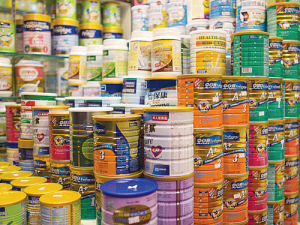MPI’s Situation and Outlook Report released at Fieldays shows dairy exports up by 13.6%, meat and wool 12.4%, forestry 15.8% and horticulture 6.4%.
The acting deputy director-general of policy and trade, Jarred Mair, says the report tells of broad growth in the value of exports and a transition from the past.
It’s exciting news for New Zealand, the report showing the crystallisation of a lot of work by a lot of people in a lot of industries.
“It’s an outstanding achievement for everybody. We are seeing the growth in all sectors,” Mair told Rural News.
In the dairy sector, for example, there is a great story of infant formula to China growing 50% in a year.
Horticulture is an ongoing success, as Rural News has reported for the last three years, and it continues at pace.
NZ obviously has a few issues with wool, but lamb and beef are holding up well.
And forestry is also booming, logs especially.
Mair says the recovery of the dairy industry is a success story: exports are up $2b over the previous year despite the drop in cow numbers and challenging weather. Butter, AMF and WMP contributed much.
Beef and lamb prices have held up well, but while lamb is doing well, it still gets little space in supermarket freezers.
“Lamb is very sensitive on price. When it reaches a certain high point people will suddenly [swap into] other products. Lamb is becoming a high-quality, luxury food and the more NZ does to position it in this space the better.”
Notably, high-end consumers are found keenly interested in animal welfare issues, the first time this has appeared in MPI research, Mair says.
“In the past, the focus was very much on taste and appearance.”
This means how NZ produces matters a lot. Discerning consumers are preferring ‘free range’ production systems over ‘industrial’ systems where animals are housed indoors. And consumers will begin to watch what we feed our animals because that can affect the taste of meat.
New pasture species, especially herb mixes, are being introduced to the NZ farming system but these must be used carefully so as not to affect the taste of the meat, Mair says.
“For example, it is said that while lucerne is a great feed for animals, they should be kept off it for at least three weeks before slaughter because it adversely affects the flavour of the meat.
“The use of Ecotain, a plantain species that reduces nitrogen leaching, is seen as positive for NZ farming.”
M. bovis impact?
M. bovis is briefly mentioned, the report noting the eradication plan.
It comments that even if the disease spreads across NZ, the impact on total beef and dairy production will likely be low.
But Mair says regardless of the outcome of the eradication programme farmers will have to change their farming systems.
“They will have to look closely at how they manage in farm biosecurity and how they expose themselves to risk. That will change the NZ farming systems, as publicly signposted in speeches by the Minister of Agriculture and MPI officials.”
The report says if no action was taken to stop the spread of M. bovis it could affect 40% of NZ farms within ten years.

















